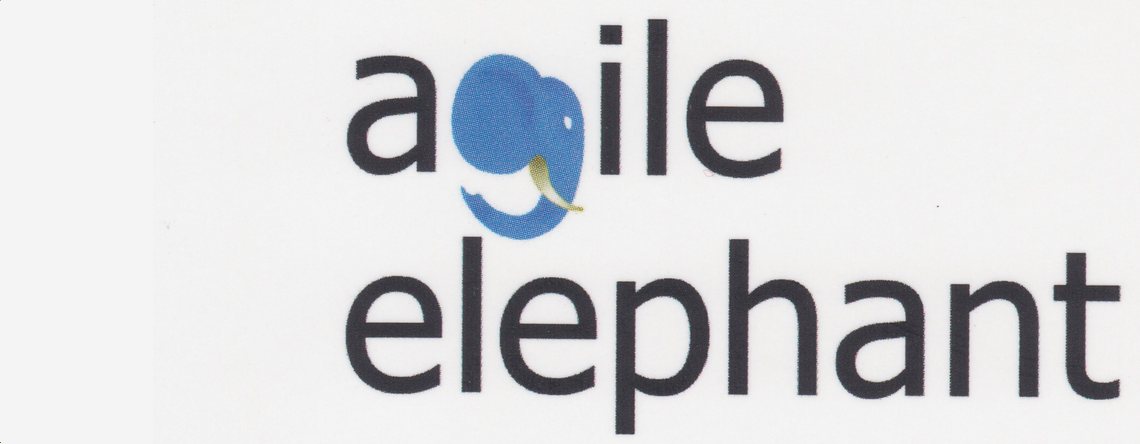It’s interesting to see that despite economic downturn, people are still starting up new businesses. Entrepreneurship, it seems, is hard to kill.

I don’t believe we are still in an economic crisis, in fact, I believe there’s always been a fair measure of exaggeration by governments in order to push other agenda’s (raising taxes, cutting expenses or giving business a reason to downsize), but that’s just my suspicious mind. Nevertheless, starting a new business takes courage and audacity, especially in these times.
In Social Business, however, the momentum seems to enable a wave of new, and exiting, undertakings.
During a conversation with David Terrar (@DT), at #e20s, we explored the current Social Business market development, and I asked him about his new venture; Agile Elephant.
Not The Right Term
David explains, “We ran an event in 2013 called “Patchwork Elephant”, which was part of Social Media Week London. We had eight speakers talking about Social Business, or Enterprise 2.0. And it turned out these terms are somewhat difficult to explain to business people.
We don’t have the right term for Social Business yet, people confuse this with Prof. Yunus’ version, where an enterprise has a social purpose. What we do, is use social tools to make business better, more effective, do better teamwork, and connect with our employees, teams, customers in a better way, with less resources.”
It used to be Office 2.0, then Enterprise 2.0, and has evolved into Social Business (as coined by Peter Kim). To me, it seems “Social Enterprise” is a more appropriate title. Although, this one too is associated with the enterprise having a social purpose. So, a proper, unifying name is still to be found.
David continues, “We’ve been going at it for a while now, at least as far back as 2006, already 8 years now. And we’re really getting traction, but the actual change will be 10, 20 or maybe even 30 years in the making.”
This explains why people (and big business) are venturing into Social Business. Social Business is not just a change, or a project. It’s a fundamental evolution of the way we work. And that takes time.
So why “Agile Elephant”?

“The first reason we started Agile Elephant is that something is just about to hatch. Social Business is just about to cross the chasm, and start to become more mainstream.
We feel the optimism that something is going to change. And we either want to jump on the wave, or, if the wave doesn’t start, we want to help start the wave.”
Based on the conversations I’ve had during (and before) #e20s, I had the distinct feeling that this line of thinking is inherent to Social Business. It’s not enough to ‘just’ make money, or to ’just’ have a job. This ‘evolution’ is a passion to those I speak to.
“We call it Agile Elephant because we think this topic is the elephant in the room, also based on a number of books about change with an elephant as the metaphor, but also about the parable of the Elephant and the Blind Men, where one feels a wall, the other a rope, the other a tree and so on.
The point is, this topic viewed differently by different people, it’s complex. That explains the elephant. The agile part comes from using a lean, agile, approach to a project.”
Social is a custom business. One size does not fit all, quite the opposite, every company requires a different approach.
This is part of the Agile Elephant Manifesto, as David explains, “We have a thirteen thesis manifesto to lay out the important things of getting Social Business right. It’s the Agile Elephant approach to Social Business.” This is good for a business to have, but also, like the Ten Tenets of Social Business, provides a great reference for fledgling Social Businesses to see what is involved with this change.
Here’s the list:
- We want to transform “business as usual”
- Business has become a social object
- There are no one size fits all solutions
- Social business needs to work across the entire value chain
- Treat people as Individuals, not nodes or cogs
- It’s time to get real
- Stop talking technology, start talking results
- We need to focus on the practical and the pragmatic
- Don’t worry about what we call it
- It’s the people, stupid!
- Learn from what has worked so far
- Those who forget the past are doomed to repeat it
- Our approach should be in “perpetual beta”
I invite you to read the entire manifesto on the Agile Elephant website.
From The Top
The combined wisdom of Agile Elephant’s three founders provides the company with a solid foundation. Here they have extensive knowledge of business processes (such as ERP and CRM), which they can combine with their thorough understanding of Social.
Businesses need to change from the top, business goals need to be aligned with social goals, business problems should be solved with social tools, and all of this needs to be connected in order to get the right statistics, proper big data, and much better results across the board.
I really enjoy these developments. Companies that start up with a unique and fresh look on the way we do business, the way we work, and ultimately the way we live.


 At IBM Connect, in the Netherlands, I had the change to listen to a presentation by IBM’s
At IBM Connect, in the Netherlands, I had the change to listen to a presentation by IBM’s 
 In the grant scheme of things we are merely pawns.
In the grant scheme of things we are merely pawns.